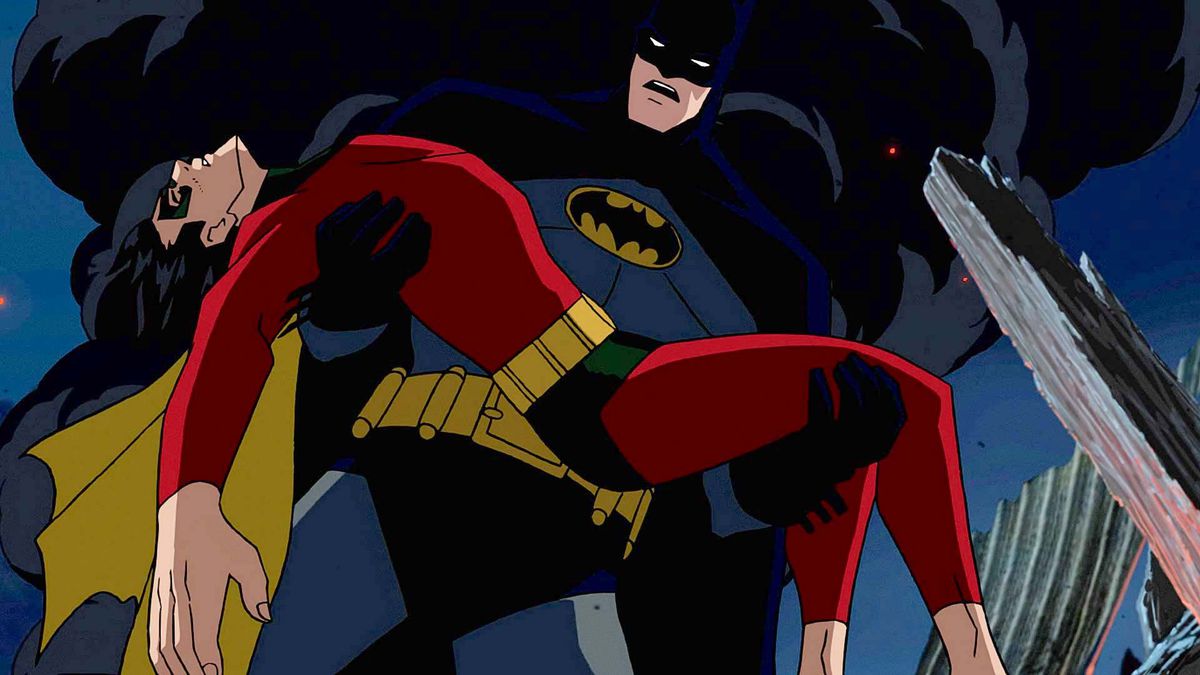Death In The Family
“Death in the Family” remains a pivotal moment in Batman’s history, a storyline that continues to resonate with fans decades later. Unlike many comic book arcs, it delves into the profound emotional consequences of loss and the complexities of heroism. The story centers on the brutal murder of Jason Todd, the second Robin, at the hands of the Joker, forcing Batman to confront a level of grief and powerlessness he had never experienced before. This event challenged his very moral code, raising questions about the boundaries of justice and the seductive nature of revenge.
Beyond the immediate tragedy, “Death in the Family” explores the intricate father-son dynamic between Batman and Jason. Some experts suggest it exposes the immense weight of expectations placed on young heroes and the struggle to forge an identity in the shadow of a legend.
The story’s impact extends far beyond the pages of a comic book, having sparked a cultural phenomenon. The decision to allow fans to vote on Jason’s fate through a telephone poll was groundbreaking, igniting a debate about audience participation in shaping narratives that continues to this day.
Various adaptations, including the haunting animated film “Batman: Under the Red Hood” and the interactive experience of “Batman: Death in the Family,” have further explored the story’s themes. These interpretations delve into the nuances of grief, revenge, and redemption, ensuring that Jason Todd’s legacy—and the profound questions raised by his death—continues to resonate with audiences, old and new.
How Many Endings Does Death in the Family Have?
The interactive film “Batman: Death in the Family” takes the story’s impact a step further by offering viewers a unique level of agency. This innovative approach to storytelling features a staggering seven different endings, each offering a distinct outcome for Jason Todd. With nine branching narrative paths, viewers hold the power of life and death in their hands.
This interactive format allows fans to not only witness the events but to participate in shaping them, creating a uniquely personal and impactful experience. Every choice has consequences, leading to different explorations of grief, the allure of vengeance, and the lasting psychological toll violence takes on everyone involved.
Is A Death in the Family a sequel to Under the Red Hood?
While both “A Death in the Family” and “Under the Red Hood” revolve around the tragic fate of Jason Todd, their relationship is not that of a traditional sequel. “Death in the Family” actually serves as a prequel, revisiting the infamous event of Jason’s death at the hands of the Joker.
What sets “Death in the Family” apart is its interactive format. This branching narrative allows viewers to make choices that directly influence Jason’s fate, creating multiple timelines that intersect with and diverge from the established narrative of “Under the Red Hood.”
Despite exploring different possibilities, the two films share a profound thematic connection. They both grapple with the emotional fallout of Jason’s death, exploring its devastating impact on Batman’s psyche and the complex motivations that drive those left behind.
Unlocking the Mystery: Who Killed Zachary in Hitman 3’s Death in the Family?
In the immersive world of Hitman 3, the “Death in the Family” mission plunges players into a classic whodunnit set within the opulent walls of the Carlisle Mansion. When Zachary Carlisle is found dead, suspicion falls upon his family, each member harboring secrets and potential motives.
Players step into the role of Agent 47, disguised as a detective hired to untangle the web of deceit. The evidence points to a carefully orchestrated murder, leaving a trail of clues that suggest a calculated plan rather than a random act of violence.
As Agent 47 investigates, he uncovers a family history rife with betrayal, resentment, and long-held grudges. The discovery of a secret passageway within the mansion hints at a killer intimately familiar with the estate’s layout.
The weight of evidence seems to point towards Emma, Zachary’s sister. The discovery of muddy heels in her room suggests she may have been outside on the night of the murder, and a letter revealing her illegitimate lineage provides a possible motive. However, other family members remain under suspicion, each with their own secrets to protect.
“Death in the Family” challenges players to analyze clues, interrogate suspects, and navigate a complex web of relationships to expose the truth. This intricate mission serves as a testament to the immersive storytelling and intricate level design that defines the Hitman franchise.
Analyzing “Death in the Family” vs. “Death of the Family”
While the phrases “Death in the Family” and “Death of the Family” may seem interchangeable, they offer distinct perspectives on the impact of loss within a family unit.
Death in the Family: This phrase centers on the emotional and social ramifications of losing a loved one. It encompasses the individual and collective grief experienced by family members, their coping mechanisms, and the shifts in dynamics that inevitably occur. This perspective acknowledges the profound sense of absence created by death and the challenges of navigating life without the deceased.
Death of the Family: This concept expands beyond individual grief to explore the potential disintegration of the family structure itself. It suggests that the loss of a member can trigger a cascade of changes, leading to a breakdown of roles, a blurring of identity, and even the potential for complete collapse. This lens highlights the fragility of family systems and the complex interplay of relationships that maintain their equilibrium.
Both “Death in the Family” and “Death of the Family” offer valuable frameworks for understanding the multifaceted ways in which loss can impact families. While one emphasizes the emotional experience, the other underscores the potential for systemic upheaval. Recognizing both perspectives allows for a more comprehensive and compassionate approach to supporting families through times of profound loss and transition.










